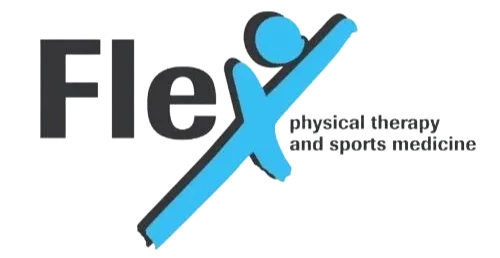Neck Pain Relief
To find relief from neck pain, it helps to understand what forces are making your neck painful. Once you understand what is causing your neck pain, you can then learn how to find relief. The #1 force that contributes to neck problems is gravity and, in turn, changes in load. The neck has 16 small muscles, joints, and bones that must work together to balance and support

10-13 pounds of skull, brain, and blood.
Any injury that changes how these muscles, bones, and joints work will contribute to head and neck problems and possibly headaches and neck pain. These injuries may include muscle strain, ligament/joint strains, nerve compression, muscle imbalances and postural changes.
Common Causes of Neck Pain
Muscle Strains: More commonly known as pulled muscles, involves tearing of the muscle fibers as a result of over stretching. This can occur during quick whiplash type events such as motor vehicle accidents or falls. Also, these injuries can occur over time with repetitive and/or overuse of the neck muscles. We see this when we find ourselves in one position for a very long time i.e. sitting at the computer or tablet/smartphone with the head looking down and shifted forward. This tightens the muscles on the front of the neck which sends a signal to the muscles on the back of the neck to relax and weaken. Next, something startles you or you just quickly life your head up and BOOM the back of your neck hurts. Other prolonged positions that can contribute to this type of injury include reading in bed or on a couch and also sleeping on your back or side with a pillow that does not properly support your head and maintain neck alignment.
Worn Joints: Wear and tear on our joints is a fact of life and just like your shoulders or knees, the neck joints will experience wear and tear with time possibly leading to osteoarthritis. The key is to slow this process as much as possible by maintaining proper posture and muscle balances around the neck in order to help combat this issue.
Nerve Compression: Located within the neck bones lies the spinal cord, which is responsible for getting brain signals to the body and receiving feedback from the body and getting that info back to the brain. If the space where the nerves enter/exit the spinal column narrows, this can cause compression on the nerve. Symptoms may include tingling, numbness, or pain. If you experience these symptoms, evaluation by a physician or physical therapist is indicated as some types of muscle tightness/injuries can also cause tingling, numbness, and pain. Contributing factors to nerve compression include possible herniated discs where the disc has weakened and deformed arthritis or bony changes where new bone has formed, or muscles around the spinal segment have gone into spasm causing the joint space to narrow. All these factors can lead to an actual direct compression on the nerve. Additionally, all three of these factors are treated differently and a through evaluation is required before treatment should be started.
What is the damage cause by a concussion?
MRI scans will often show “white spots” several years after the head injury happened. The meaning of these white-spots is often debated but are popularly indicative of a past concussion.
No matter what he severity of trauma to the head, you want to lessen it all that you can. Concussions can cause temporary visual impairment, speech impairment, problems with balance, memory problems, confusion, headaches, nausea or vomiting, slowed reaction to stimuli, sensitivity to light or noise, lack of energy and other problems. Emotionally, a person who has experienced a concussion may feel sad, nervous, anxious or easily upset/angered. Many people associate a loss of consciousness with a concussion however a loss of consciousness may or may not have occurred. How long these effects last depends upon the severity of the concussion and how soon the concussion was treated after it occurred. The symptoms may begin immediately or they may take up to months to develop. The long-term impact of a concussion is often debated.
Physical therapy can treat dizziness, headaches, promote core stability and much more.
Whether it is to promote injury prevention with a neck strengthening and upper trunk stability program or if it’s to treat headache, dizziness or pain after the concussion…we are the local experts in Council Bluffs, Iowa. Do not delay, sometimes the symptoms can take up to several months before they are even realized. If left untreated, the symptoms can magnify with intensity. Call our experts at 712-256-1800. You only have 1 brain!
Home Remedies for Easing Neck Pain
Take a Break: Posture breaks are the simplest ways to relieve neck strain. We recommend that you do these at least every 30 minutes if your job requires prolonged sitting or computer use. Posture breaks are completed by pausing any computer work you are doing and make an effort to sit up straight and with the head slightly pulled back you squeeze the shoulder blades together for 5 reps. Once completed, do gentle chin tucks for 5 reps. If you have difficulty with the head/neck position you can stand up against a wall. Place your bottom, shoulders, and back of head against the wall and then repeat the shoulder blade movements. If you have difficulty getting your head to the wall you need to schedule an appointment to have your posture assessed and then get a program designed specifically for you.
Relax: Increased stress levels can cause an increase in muscle tension around the shoulders and neck. This can also lead to changes in breathing patterns that further contribute to neck muscle strain.
- Progressive Relaxation: Sit or lie down and close your eyes in a quiet location. Then consciously tighten the muscles of the head and neck and hold for 2 seconds and then completely release. Continue down the entire body for 8 to 10 reps.
- Abdominal Breathing: Sit or lie down and take in a slow, deep breath initiating with your abdomen. Inhale for approximately 4 seconds, hold for 3 seconds and then exhale completely for 8 seconds, gently pulling in the stomach. Complete for several minutes using caution not to complete too quickly as to cause you to hyperventilate.
Other great relaxation techniques include meditation, yoga, and exercise.
Massage Therapy: Massage therapy can increase circulation bringing oxygenated blood to tight restricted muscles and help evacuate metabolic by-products that can contribute to the pain response. Additionally, massage therapy helps to soften scar/fibrous tissues and help the muscles to move through a more complete range of motion.
The Right Pillow: It is very important to choose the right pillow to combat neck pain. On average, people sleep 5-10 hours per night. This is when our bodies repair and rejuvenate. Restless sleep or sleeping postures that contribute to neck muscle strain will not allow our bodies to do their jobs while we sleep. What should your pillow do for you? Your pillow needs to keep the neck in a neutral position and in line with the spine when lying on your back or side. If you sleep on your stomach (not recommended for optimum neck health) use a very thin pillow or no pillow at all. If you find yourself waking with neck pain or stiffness, it may be time to make an adjustment.
Treatment for Neck Pain
If the above home remedies aren’t enough to correct your neck pain, don’t worry! We have specialized programs in place (designed by Mike Uhrlaub) that have shown great results at relieving your neck pain quickly. Call Flex Physical Therapy for more information or to schedule an appointment! 800-930-8803
